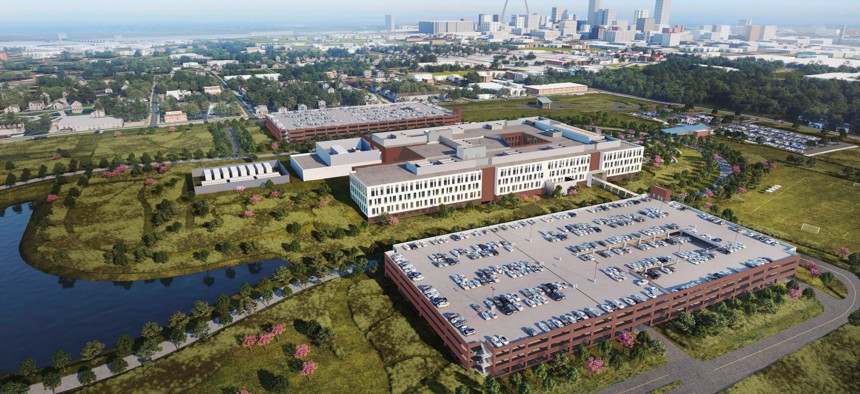NGA eyes down selection to speed acquisitions

Rendering of the National Geospatial-Intelligence Agency's western headquarters in St. Louis, expected to be completed in 2025 DOD photo by James Lowe
The down selection process can give the government, and vendors, a more detailed preview into the desired solution and what can actually be delivered.
U.S. defense and intelligence agencies have been leaning on rapid acquisition authorities to develop prototypes and experimental technology from the Army's augmented reality goggles to an online marketplace for AI tools. But for contracts that may garner a lot of vendor interest, the National Geospatial-Intelligence Agency (NGA) is looking to increase its use of down selection to make sure it gets what it needs.
"We can have the fastest, greatest acquisition method, but in the end, if the outcome isn't well defined, and we don't get what we actually need, we've wasted a whole lot of time," Susan Pollmann, the National Geospatial-Intelligence Agency's executive for its St. Louis, Mo. headquarters, said during an Intelligence and National Security Alliance virtual event on Feb. 24.
NGA is also taking advantage of Small Business Innovation Research (SBIR) and other transaction agreement contracts, which can help boost small business partnerships, Pollmann said, but there's also a burgeoning interest in processes called "advisory down selects," particularly when there's a lot of competition.
"The advisory down select allows us to get some initial proposals in – lower key, less complex – and then we can go back to industry and say, okay, yes, you are set up to compete well on this or no, you're not, and we would probably advise you not to to proceed," Pollmann said.
Pollmann also noted that the companies would then decide whether they wanted to bid and submit, which she said are often very complex proposals.
"So we're kind of just starting down that path," said Pollmann who is also the program director for the new nearly $2 billion N2W facility that's set to go online in 2025. "Everything goes faster and better, if we're actually working together from the time we're defining a requirement to when we get it on contract and after that."



